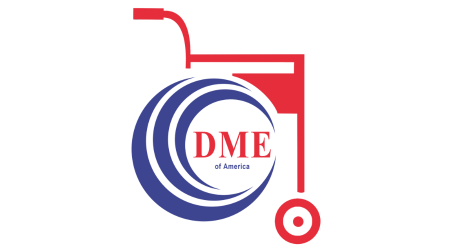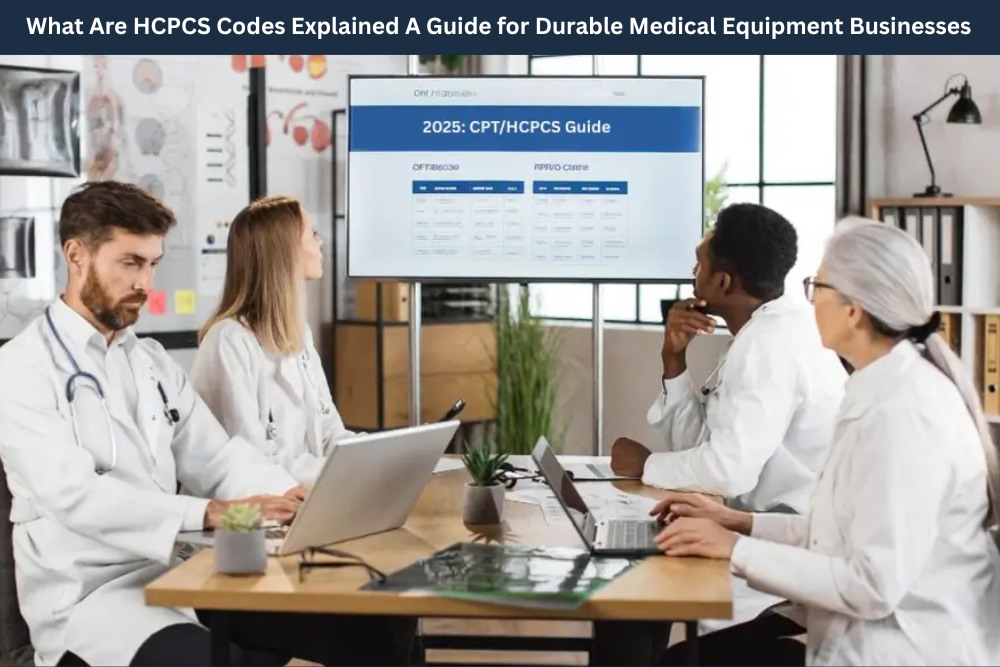Working with Durable Medical Equipment (DME) codes as part of the HCPCS coding system is essential for a DME business such as DME of America Inc. to run effectively and bill accurately. And just what are HCPCS codes, and why are they so important? In simple terms, this guide explains the whole concept in an easy manner, which helps DME suppliers to handle Medicare billing better, reduce claim denials to lower and improve the efficiency of their work. So, let’s get to know how these codes operate and why they are a game-changer for your business.
Think about this a patient requests a wheelchair or oxygen concentrator from your available stock. You are offering a Service of the highest standard. However, a Billing with one wrong code can still cause a delay in being paid or even result in your claim being rejected. HCPCS codes are like one language that everyone understands, be it insurers, providers, or suppliers. At DME of America Inc., we hold the view that these codes are the pillars supporting easy DME billing, so let’s get the essentials of their help.
What Are HCPCS Codes?
What are HCPCS Codes stands for the Healthcare Common Procedure Coding System, which is a common coding system for the identification of medical services, supplies, and equipment for billing purposes. HCPCS codes, which are under the supervision of the Centers for Medicare & Medicaid Services (CMS), guarantee correct payment to DME suppliers as well as other healthcare providers. The system was developed in the 1980s as a temporary solution for the missing places in the then-existing coding systems, and now HCPCS is still being virtually updated with all changes in the medical field. For DME suppliers, it is not only the safe side that comes first but also the continued good patient care, which they can achieve through the proper and efficient use of these codes.
HCPCS Level I vs. HCPCS Level II:
What are HCPCS codes? To figure it out, it is necessary to be familiar with two levels.
- HCPCS Level I: These are CPT codes (Current Procedural Terminology), five-digit numeric codes managed by the American Medical Association. Used mainly for physician services, like 97760 for orthotic fittings, they are less relevant for a DME company that is focused on equipment.
- HCPCS Level II: These are the alphanumeric codes, which start with a letter (A-V) followed by four digits, and are very important for DME billing. They specify the coverage for the devices that are used to assist the needs of patients (DMEPOS), like ambulance services or medical supplies that are not included in CPT codes. CMS usually updates Level II biannually or quarterly, with the most recent changes being published in August 2025.
HCPCS Level II is essential for DME of America Inc. to bill items such as wheelchairs and CPAP machine. The difference between HCPCS and CPT is that CPT codes refer to the procedures, whereas HCPCS supplies and equipment.
What Are HCPCS Codes for Durable Medical Equipment:
As a supplier of DME, what are HCPCS Codes you use to identify products that are made for repeated use, e.g., hospital beds for home or mobility aids. These codes, which mainly belong to HCPCS Level II, guarantee accurate billing to Medicare and other insurers. Typical categories are.
- A Codes (A0021-A9999): These represent services and products related to transportation and supplies. For example, A4233 for batteries of glucose monitors is one of these supplies.
- E Codes (E0100-E8002): The first mention is of the disabled mobility unit, e.g., a cane (E0100), still with oxygen equipment (E1390) being the second.
- K Codes (K0001-K0899): Wheelchair-related temporary codes are given as an example of K0001, which includes standard models.
- L Codes (L0100-L9900): L0120 is an example of a product in the orthotics/prosthetics field that is a cervical collar.
This is a list of the most common HCPCS codes for DME with their respective categories.
| Category | HCPCS Code | Description |
| Respiratory Equipment | E0601 | CPAP device |
| E1390 | Oxygen concentrator | |
| Mobility Aids | K0001 | Standard wheelchair |
| E0143 | Folding walker | |
| Diabetes Management | E0607 | Home blood glucose monitor |
| A4253 | Blood glucose test strips, per 50 | |
| Therapy & Pain Management | E0720 | TENS unit, two leads |
| Beds and Home Equipment | E0260 | Semi-electric hospital bed |
There should never be any coding without checking if the CMS has been updated. We at DME of America Inc. utilize these codes to make sure that our clients have a smooth billing process.
The Role of HCPCS Modifiers in DME Billing:
HCPCS modifiers are two-letter add-ons that clarify billing details, such as whether equipment is rented (RR), new (NU), or used (UE). For example, the KX modifier confirms medical necessity documentation. Common modifiers include.
- RR: Rental
- NU: New equipment
- UE: Used equipment
- GA: Advance Beneficiary Notice issued
Using the right modifiers can lead to a substantial decrease in denial rates,a number of companies, for example, can achieve a 20% reduction in denials just by focusing on correct modifiers.
Best Practices for Using HCPCS Codes:
To achieve the position of a DME supplier, the following tips can be used.
- Stay Updated: You can look into the CMS updates quarterly through the help of resources like MEARIS.
- Train Staff: Regular training on HCPCS is one of the ways to reduce the frequency of errors.
- Document Well: Always keep your medical necessity proof as a guarantee of compliance.
- Use Software: Healthcare app development and billing apps can give you the correct codes along with modifiers.
- Audit Regularly: Internal reviews are the best ways to catch issues at an early stage.
At DME of America Inc., we are applying these strategies to simplify our processes and give the highest priority to patient care.
Conclusion:
What are HCPCS codes? It is the part they play in the durable medical equipment field is quite logical for any DME business. Practicing HCPCS Level II codes, modifiers, and adhering to the set guidelines will empower you to optimize the Medicare billing and expand your business. Don't hesitate to get in touch with DME of America Inc. for the professional guidance while you are on this journey of working with these codes!
FAQs
What are HCPCS codes?
What are HCPCS Codes are also known as Level I or CPT and HCPCS Level II was created, apart from procedures, to take into consideration supplies and equipment.
What is the frequency of HCPCS code updates?
HCPCS Level II codes changes every six months for non-drugs and every three months for drugs, from the Centers for Medicare & Medicaid Services (CMS).
For DME billing, why are HCPCS modifiers crucial?
They indicate the specific details such as the rental status or the condition of the equipment to make sure that the reimbursement is accurate and that the organization complies with the regulations.
Can I get private insurance using my HCPCS codes?
HCPCS codes are accepted by a large number of private insurers; nevertheless, requirements may differ; always refer to payer guidelines.
Where can I locate the whole DME HCPCS code list?
check out the CMS website or resources such as AAPC for thorough lists and updates.

